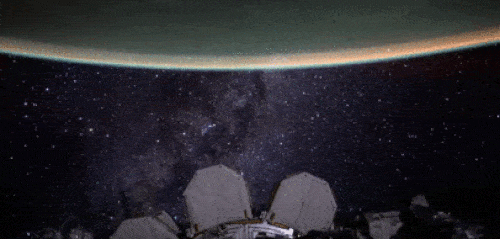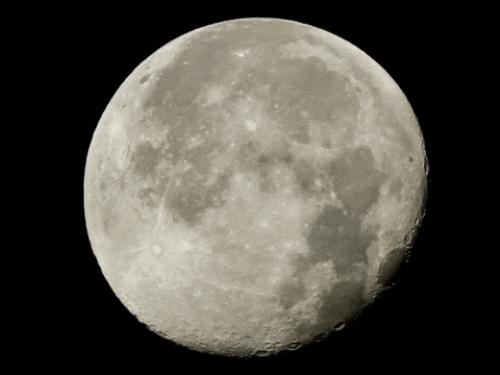The Night Sky. 09/03/15 Watch As The Colour Of The Sky Changes Due To The Rising Moon. This Was A 4 Hour
The night sky. 09/03/15 Watch as the colour of the sky changes due to the rising Moon. This was a 4 hour time lapse recorded last night from 21:00-01:00.
More Posts from Space-m17-blog and Others

(3 June 1965) — Overall view of the Mission Control Center in Houston, Texas, during the early hours of the Gemini-Titan 4 spaceflight. Photo credit: NASA

Albert Einstein in a vintage polo.
Why do we explore? Simply put, it is part of who we are, and it is something we have done throughout our history. In “We Are the Explorers,” we take a look at that tradition of reaching for things just beyond our grasp and how it is helping us lay the foundation for our greatest journeys ahead. So what are we doing to enable exploration? We’re building the Orion spacecraft is built to take humans farther than they’ve ever gone before. Orion will serve as the exploration vehicle that will carry the crew to space, provide emergency abort capability, sustain the crew during the space travel, and provide safe re-entry from deep space return velocities. Orion will launch on NASA’s new heavy-lift rocket, the Space Launch System.
Also underway, is Astronaut Scott Kelly’s Year In Space. Kelly is living and working off the Earth, for the Earth aboard the station for a yearlong mission. Traveling the world more than 220 miles above the Earth, and at 17,500 mph, he circumnavigates the globe more than a dozen times a day conducting research about how the body adapts and changes to living in space for a long duration.

This Monday, Aug. 17, marks the final targeted flyby of Dione, one of Saturn’s many moons, in Cassini’s long mission. During this flyby, the science team will conduct a gravity experiment that will contribute to our knowledge of the internal structure of Dione. We will also learn more about its outer ice shell, and will be able to compare this with Saturn’s other icy moons.
Beyond the icy moons, Saturn is adorned with thousands of beautiful ringlets, While all four gas giant planets in our solar system have rings – made of chunks of ice and rock – none are as spectacular or as complicated as Saturn’s. Like the other gas giants, Saturn is mostly a massive ball of hydrogen and helium.

This image of Saturn was taken using an infrared filter. Using this type of filter can help scientists determine the location of clouds in the planet’s atmosphere. The darker areas reveal clouds that are lower in the atmosphere, while the bright areas are higher altitude clouds.
Since Cassini reached Saturn in 2004, it has captured important data and images. This spacecraft has the ability to “see” in wavelengths that the human eye cannot, and it can “feel” things about magnetic fields and tiny dust particles that no human hand could detect. These heightened “senses” have allowed us to have a better understanding of Saturn, its moons and the solar system.

Learn more about Cassini & Saturn: http://saturn.jpl.nasa.gov/
International Space Station

The International Space Station is an important and special place that is built on international cooperation and partnership. The station is a convergence of science, technology and human innovation that benefits and advances our global community here on Earth.

While the space station is an important aspect of our low-Earth orbit exploration, it is also the key to our next giant leap to deep space and our Journey to Mars. For example, our recent VEGGIE experiment aboard the space station is a critical aspect of long-duration exploration missions farther into the solar system. Food grown in space will be a resource for crew members that can provide them will essential vitamins and nutrients that will help enable deep space pioneering.
Another important experiment underway is the Twins Study that involves twin astronauts Scott and Mark Kelly. These investigations will provide insight into the subtle effects and changes that may occur in spaceflight as compared to Earth by studying two individuals who have the same genetics, but are in different environments for one year. You can follow Scott Kelly as he spends a year in space.

The space station is the second brightest object in the sky (after the moon, of course), and you don’t even need a telescope to see it! We can even tell you exactly when and where to look up to Spot the Station in your area!
So, as you look to spot the station in the sky, remember that even though it may look small from Earth, the crew onboard (and at home) are making contributions to international partnerships and global research.

This Week’s Astronomy News:
48 Galaxies Found: http://ift.tt/1NSd8Rk How Galaxies Evolve: http://ift.tt/1JwtT1n Alien Life: http://ift.tt/1JwtRqe Dark Energy: http://ift.tt/1NSd6ZJ Black Hole: http://ift.tt/1NSd6ZL Twin Jet: http://ift.tt/1NSd8Rn

The Supernova 1994D
Astronomy is important because it tells us how big is the universe and how it spreads even more and when we understand that infinite distances we will learn to love and appreciate what is closest to us
My astronomy teacher, Slobodan Spremo (via amsterdam-obsessed)


To visualise the black hole in Interstellar, the VFX team collaborated with theoretical physicist Kip Thorne to solve the equations for propagation of light around a spinning black hole. The shape is due to way light is lensed (deflected) by the strong gravitational field of the black hole. The asymmetry is caused by the relativistic time dilation near the event horizon.
The top image shows the black hole in the movie. The bottom image is a more accurate visualisation taking into account Doppler and gravitational frequency shifts. This was considered too confusing for the audience. They also slowed the black hole’s spin down from that required to explain the time dilation experienced in the movie, to make the black hole appear less asymmetric.
The are releasing two papers on their work, the first of which is available in preprint on arXiv.

In case you missed it earlier in July, here’s a look at how our view of Pluto has changed over the course of several decades. The first frame is a digital zoom-in on Pluto as it appeared upon its discovery by Clyde Tombaugh in 1930 (image courtesy Lowell Observatory Archives). The other images show various views of Pluto as seen by NASA’s Hubble Space Telescope beginning in the 1990s and NASA’s New Horizons spacecraft in 2015. The final sequence zooms in to a close-up frame of Pluto released on July 15, 2015.
This amazing view of details on Pluto came via New Horizons, which launched on Jan. 19, 2006. New Horizons swung past Jupiter for a gravity boost and scientific studies in February 2007, and conducted a reconnaissance flyby study of Pluto and its moons in summer 2015. Pluto closest approach occurred on July 14, 2015. As part of an extended mission, the spacecraft is expected to head farther into the Kuiper Belt to examine one or two of the ancient, icy mini-worlds in that vast region, at least a billion miles beyond Neptune’s orbit.
Image credits available here.
-
 mythings18 reblogged this · 1 month ago
mythings18 reblogged this · 1 month ago -
 theophages liked this · 1 month ago
theophages liked this · 1 month ago -
 barefoot--and--braless reblogged this · 2 months ago
barefoot--and--braless reblogged this · 2 months ago -
 barefoot--and--braless liked this · 2 months ago
barefoot--and--braless liked this · 2 months ago -
 1942pndr liked this · 3 months ago
1942pndr liked this · 3 months ago -
 be-your-dreamgirl reblogged this · 4 months ago
be-your-dreamgirl reblogged this · 4 months ago -
 s-h-y-y-a-n-n-e liked this · 4 months ago
s-h-y-y-a-n-n-e liked this · 4 months ago -
 hvndrixx liked this · 4 months ago
hvndrixx liked this · 4 months ago -
 izmagizz reblogged this · 4 months ago
izmagizz reblogged this · 4 months ago -
 squeackygee reblogged this · 5 months ago
squeackygee reblogged this · 5 months ago -
 squeackygee reblogged this · 5 months ago
squeackygee reblogged this · 5 months ago -
 plotinme9 liked this · 5 months ago
plotinme9 liked this · 5 months ago -
 overth1nkerx reblogged this · 5 months ago
overth1nkerx reblogged this · 5 months ago -
 fergal1cious liked this · 5 months ago
fergal1cious liked this · 5 months ago -
 moonbaymist reblogged this · 5 months ago
moonbaymist reblogged this · 5 months ago -
 moonbaymist liked this · 5 months ago
moonbaymist liked this · 5 months ago -
 bouquet-0f-clumsy-words reblogged this · 5 months ago
bouquet-0f-clumsy-words reblogged this · 5 months ago -
 gemma-bee reblogged this · 5 months ago
gemma-bee reblogged this · 5 months ago -
 signs-of-sleep reblogged this · 5 months ago
signs-of-sleep reblogged this · 5 months ago -
 angelspoisonn reblogged this · 5 months ago
angelspoisonn reblogged this · 5 months ago -
 herveryown reblogged this · 5 months ago
herveryown reblogged this · 5 months ago -
 herveryown liked this · 5 months ago
herveryown liked this · 5 months ago -
 witchiestpeachfairy reblogged this · 5 months ago
witchiestpeachfairy reblogged this · 5 months ago -
 squeackygee reblogged this · 5 months ago
squeackygee reblogged this · 5 months ago -
 squeackygee reblogged this · 5 months ago
squeackygee reblogged this · 5 months ago -
 starryrika reblogged this · 5 months ago
starryrika reblogged this · 5 months ago -
 starryrika liked this · 5 months ago
starryrika liked this · 5 months ago -
 the-letter-horror-lover liked this · 6 months ago
the-letter-horror-lover liked this · 6 months ago -
 angelic-girl liked this · 6 months ago
angelic-girl liked this · 6 months ago -
 esqueceu-me reblogged this · 6 months ago
esqueceu-me reblogged this · 6 months ago -
 bellynick liked this · 6 months ago
bellynick liked this · 6 months ago -
 descrevos reblogged this · 6 months ago
descrevos reblogged this · 6 months ago -
 red-winters liked this · 7 months ago
red-winters liked this · 7 months ago -
 annarm02d liked this · 7 months ago
annarm02d liked this · 7 months ago -
 afktb liked this · 7 months ago
afktb liked this · 7 months ago -
 unfamiliarlibraries reblogged this · 8 months ago
unfamiliarlibraries reblogged this · 8 months ago -
 sof1yah liked this · 8 months ago
sof1yah liked this · 8 months ago -
 winterrmoons reblogged this · 8 months ago
winterrmoons reblogged this · 8 months ago -
 winterrmoons liked this · 8 months ago
winterrmoons liked this · 8 months ago -
 firstplacegoestonotme liked this · 8 months ago
firstplacegoestonotme liked this · 8 months ago -
 vodkasicecream liked this · 8 months ago
vodkasicecream liked this · 8 months ago -
 messy-does-cosmology reblogged this · 8 months ago
messy-does-cosmology reblogged this · 8 months ago -
 studentofthecosmos reblogged this · 8 months ago
studentofthecosmos reblogged this · 8 months ago
I love space. I've been to space camp in Huntsville Alabama and I am planning on going every summer. I look forward to be an astronaut for nasa on the sls that is planned to be launched 2018. And the manned mission 2030. So yeah I won't let anything get in my way.
138 posts